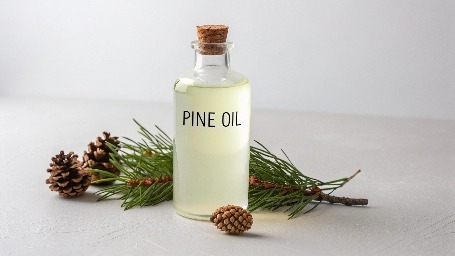Pine oil is a versatile and widely used essential oil in various industries, particularly in the paint and coatings sector. Derived from pine trees, this aromatic oil is valued for its unique properties, including its pleasant pine smell and solvent capabilities. In this blog, we’ll dive into the cost of pine oil in the paint industry, exploring factors that influence the pine oil price, its different grades like Pine Oil 65%, Pine Oil 70%, Pine Oil 85%, and Pine Oil 95% India, and its role alongside related compounds such as Dipentene Oil, Delta-3-Carene, DDTO Oil, and Terpinolene Oil.
Understanding Pine Oil and Its Applications
Pine
oil is a natural extract obtained from pine needles, pine cones, or pine rosin, often
processed into grades like Pine Oil 65%, Pine Oil
70%, Pine Oil 85%, and Pine Oil
95% India. Its uses
span across the paint industry, cleaning products, perfumery, and even the leather and textile
industries. In the paint sector, pine oil serves as a solvent and contributes to the formulation
of protective coatings and spray paint, enhancing durability and providing a forest-like
fragrance.
The pine oil price
fluctuates based on several factors, including raw material availability,
manufacturing processes, and global demand. Let’s break down how these elements impact its cost
and why it remains a prominent choice in the paint industry.
Factors Influencing Pine Oil Price in the Paint Industry
The cost of pine oil in the paint industry is not static—it varies due to market dynamics and production specifics. Below are the key factors driving the pine oil price:
Pine Oil Price Chart
Here’s a simplified chart showcasing approximate price ranges for different pine oil grades (as of April 2025, based on general industry trends):
| Grade | Purity | Approx. Price Range (USD/kg) |
|---|---|---|
| Pine Oil 65% | Standard | $2.50 – $3.00 |
| Pine Oil 70% | Mid-grade | $3.20 – $3.80 |
| Pine Oil 85% | High Purity | $4.50 – $5.50 |
| Pine Oil 95% | Premium | $6.00 – $7.20 |
Industrial Pine Oil: Cost vs. Benefits
Why Pine Oil is Essential in Paints
In the spray paint industry and protective coating applications, industrial pine oil stands out for its:
- Solvent Properties: Dissolves resins and oils effectively.
- Aromatic Appeal: Adds a pleasant pine smell, unlike synthetic alternatives.
- Versatility: Works alongside vegetable oil or aromatic oils in formulations.

Cost-Benefit Analysis
While the pine oil price may seem higher than some synthetic solvents, its natural pine oil benefits—such as eco-friendliness and compatibility with various paints—make it a preferred choice. For instance, Pine Oil 85% offers a balance between cost and performance, while Pine Oil 95% India caters to premium coating needs.
Pine Oil Rate Across Markets
The pine oil rate differs globally. In India, Pine Oil 95% is a sought-after grade due to its purity, often distributed in 200-litre packs or barrels. Meanwhile, markets in the US and Europe may lean toward Pine Oil 70% for cost efficiency. Pine oil distribution networks and manufacturers like Manish Minerals play a crucial role in stabilizing prices across these regions.
The cost of pine oil in the paint industry reflects its value as a natural, effective, and aromatic solution. Whether you’re sourcing Pine Oil 65%, Pine Oil 70%, Pine Oil 85%, or Pine Oil 95% India, understanding the pine oil price dynamics helps businesses make informed decisions. With its synergy alongside compounds like Dipentene Oil, Delta-3-Carene, DDTO Oil, and Terpinolene Oil, pine oil remains a cornerstone of the paint and coatings world.